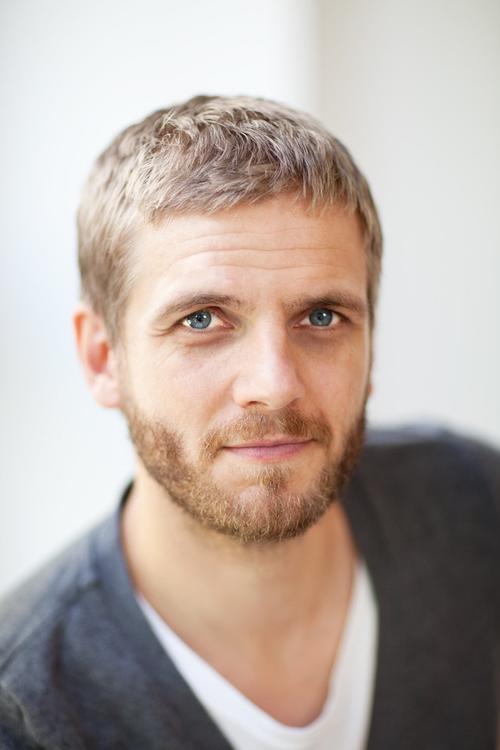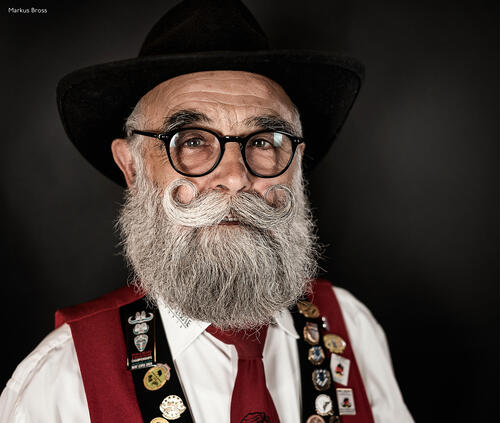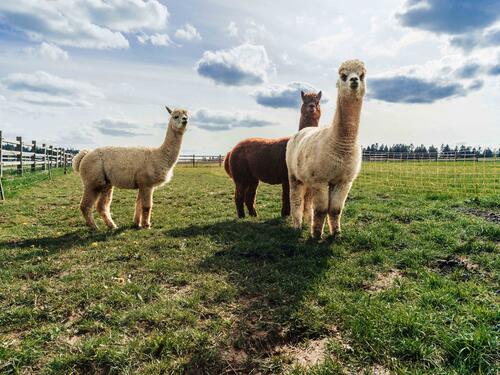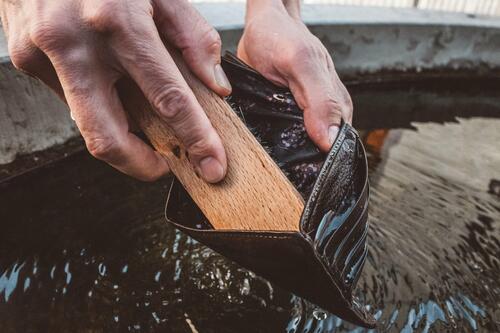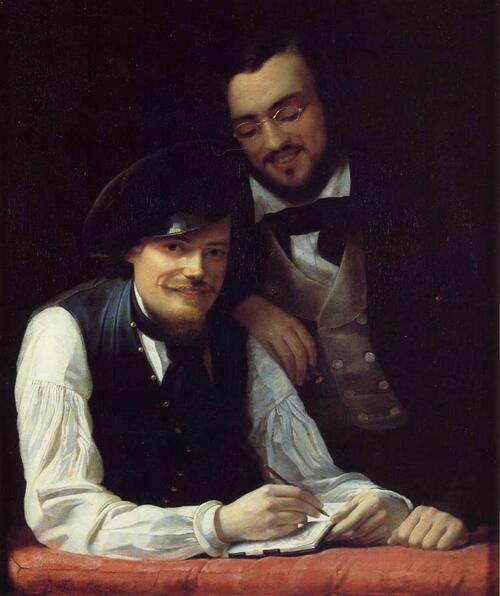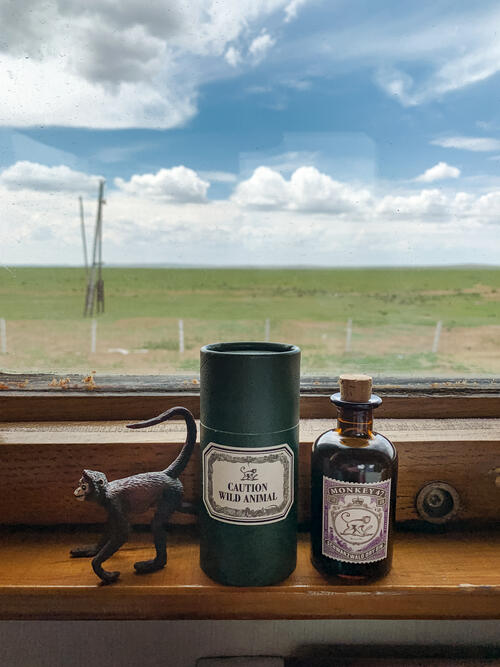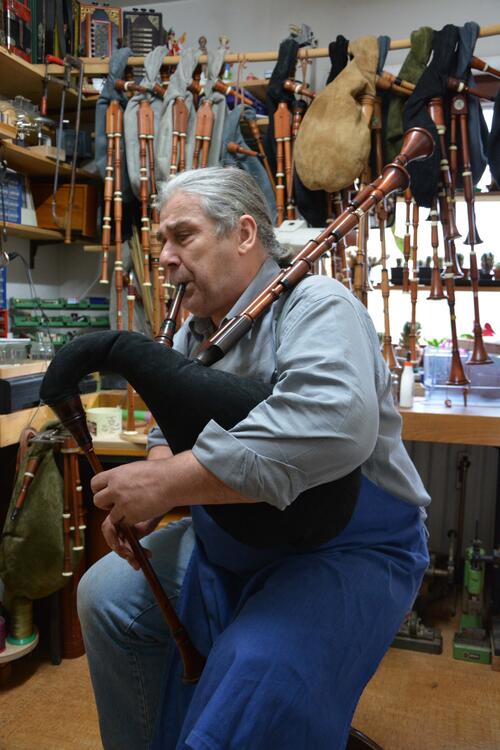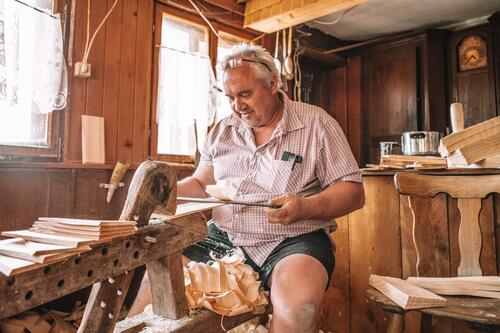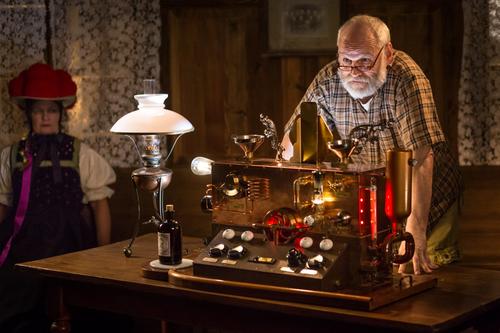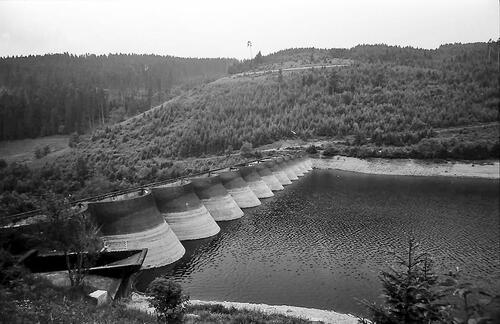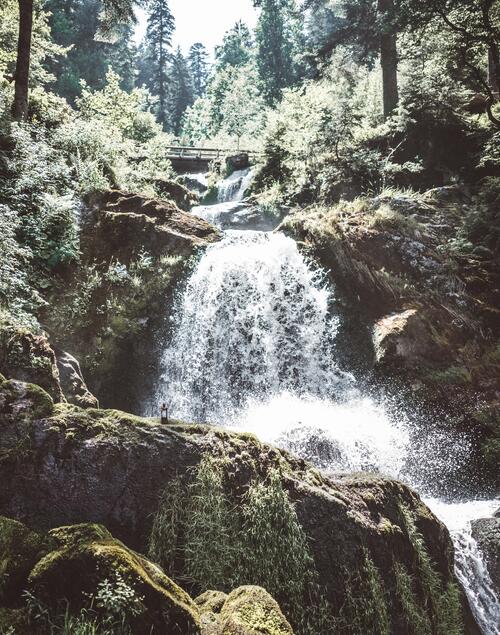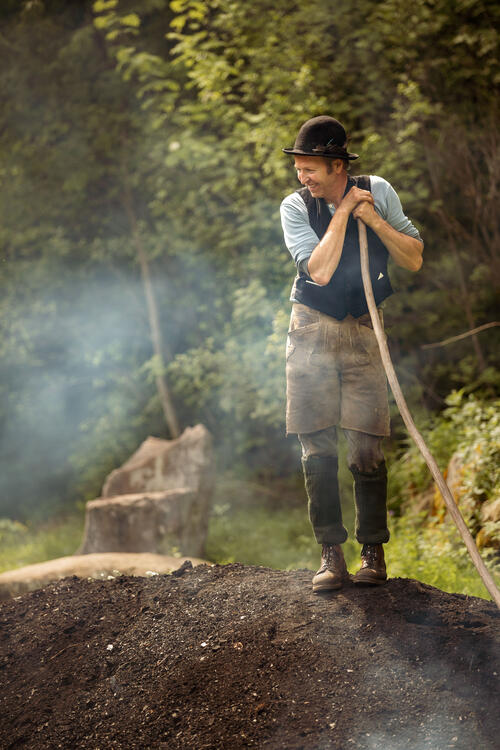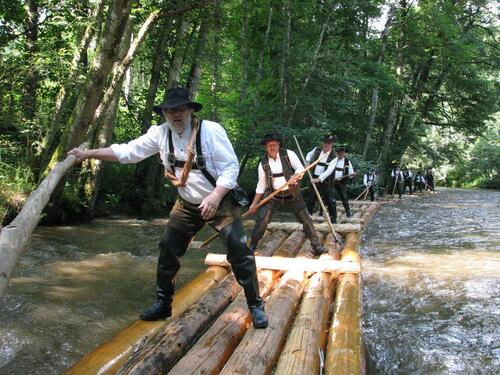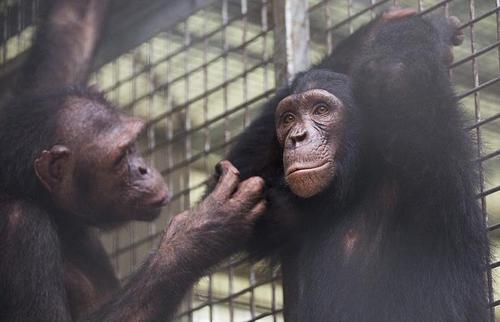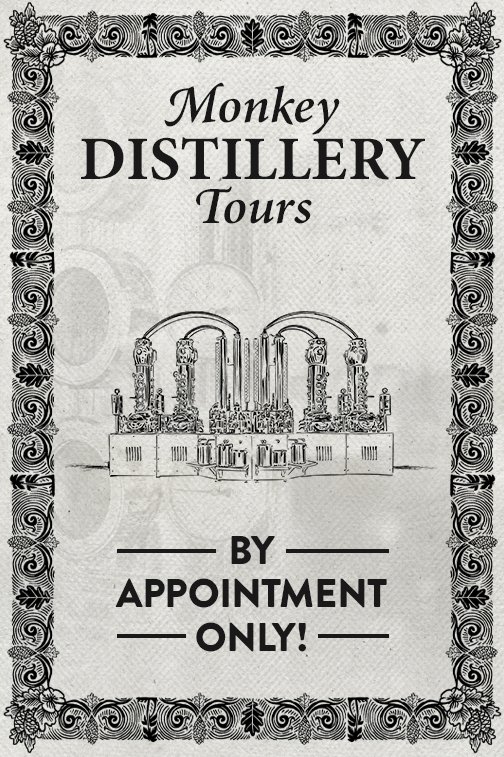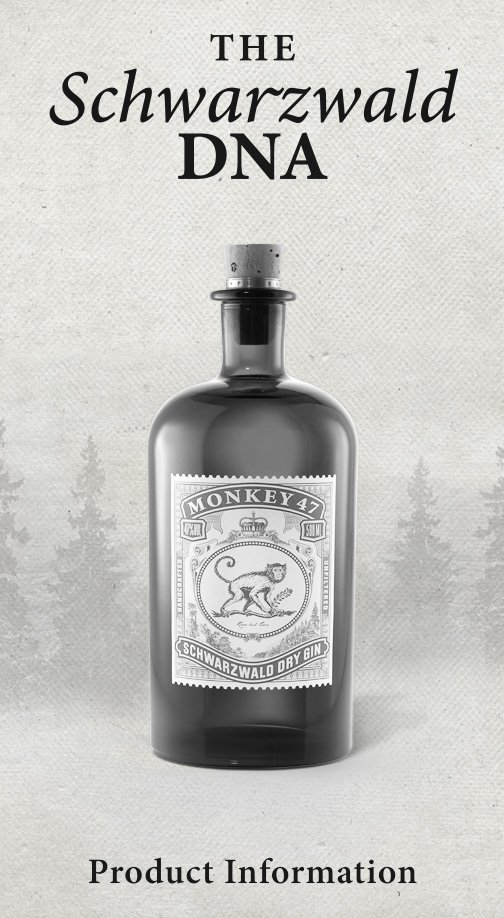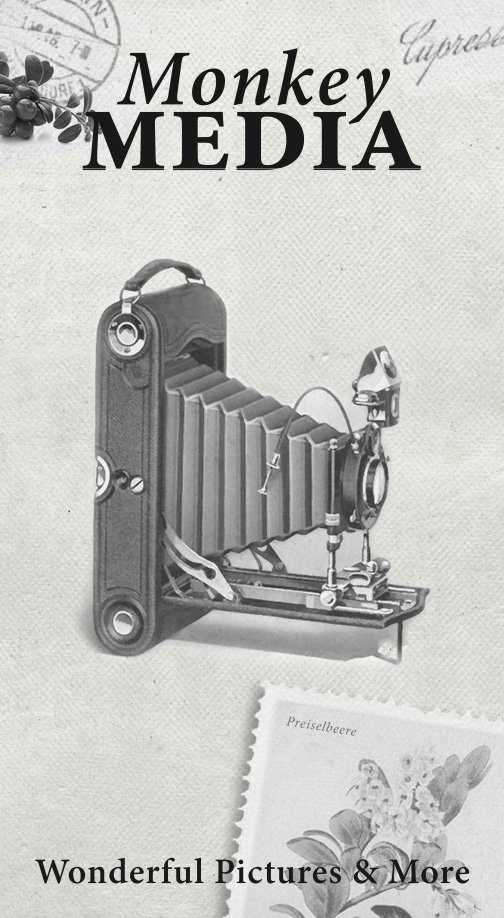Our lady of hewn stone
Karin Walther works as a stonemason at one of the oldest workshops devoted to the craft – Freiburg’s Münsterbauhütte. Hers is a story of artisanry, patience, and the historical significance of curly-wooled sheep.
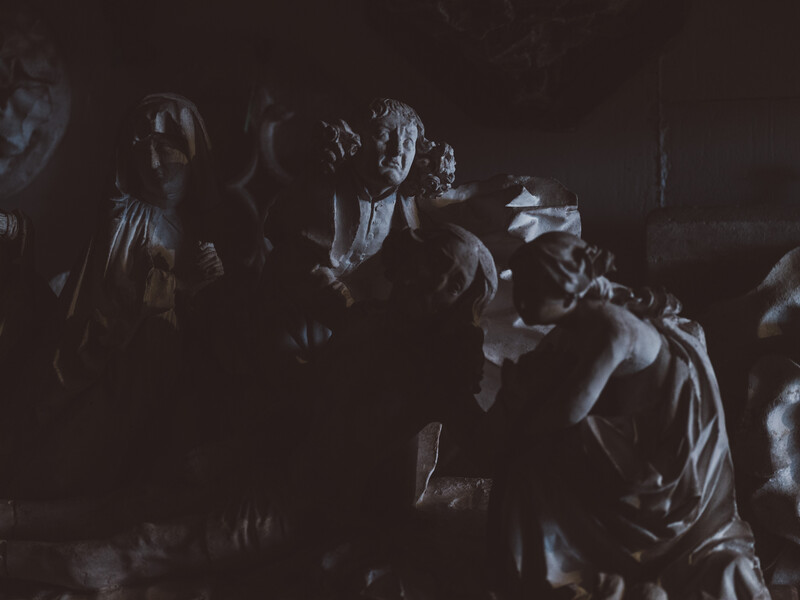
“Up there – you can see it better from here,” Karin Walther says as she points skyward. “There’s a bit of the trumpet and some of the wing that sticks out.” We’re standing in the middle of Freiburg’s historic centre on Münsterplatz, the square that surrounds the city’s venerable minster. The scent of peonies is doing its best to stand up to the savoury aroma of the bratwurst served up at the open-air market that’s held outside this red sandstone edifice every day. The market stands also have other Black Forest specialities on display, including ham and Kirschwasser. Fresh fruits and vegetables have been stacked into dutiful piles – fat red onions alongside cherries, strawberries, and other local produce. Vendors at other brightly coloured stands are busy wrapping up lavish flower bouquets, and the region’s vintners have brought plenty of Müller Thurgau, Gutedel, and Riesling for the day’s customers. If your nose has already settled on that bratwurst, however, the long, red variety Freiburg is known for is available at no fewer than four grills. People already start heading in that direction just before lunchtime, and the queues tend to be long.
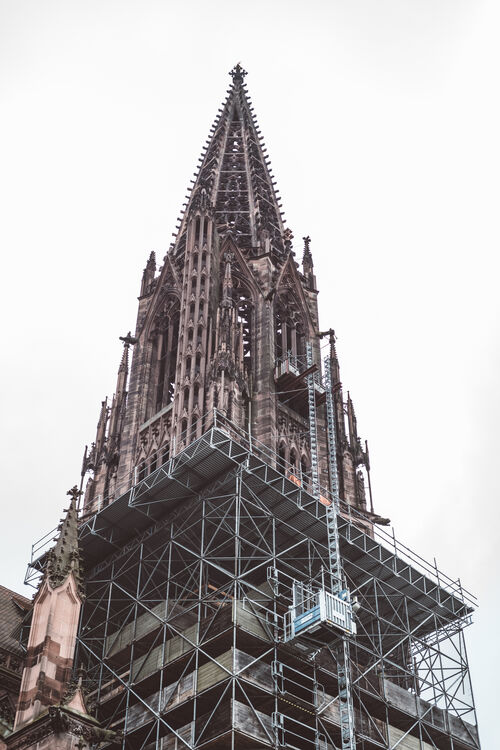
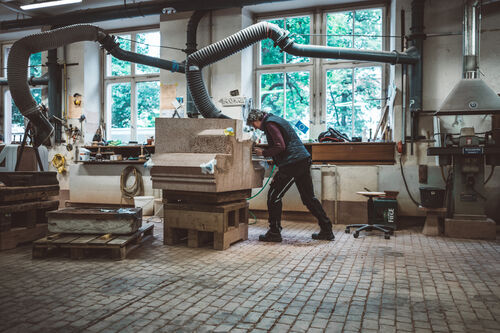
The square really is bustling today: A din of voices fills the air; goods change hands; prams are muscled over electrical cables and cobblestones; groups of tourists do their best to stay together; and locals lugging large bags of groceries weave their way through it all. Most people are keeping their eyes on the floor to watch their step. Along with the cobblestones, there’s another stumbling hazard here that’s unique to Freiburg: the Bächle, which are small channels of running water that criss-cross the city.
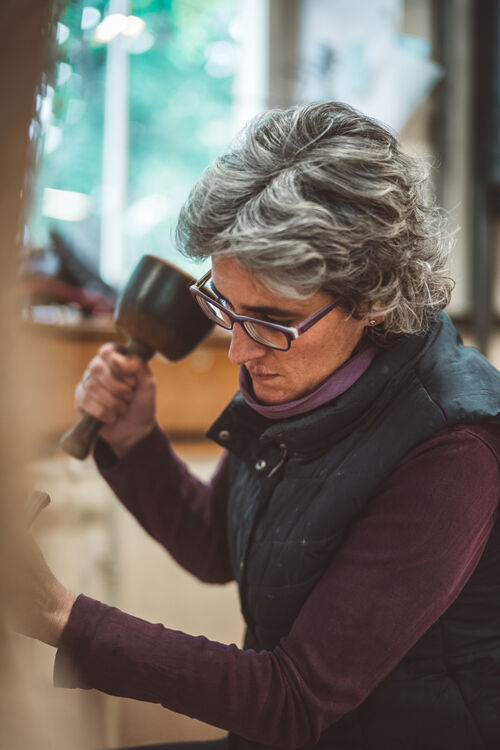
Meanwhile, a determined Karin Walther directs our gaze upward to the steeple of the massive church. “There! That’s the one I made.” We follow her outstretched arm to a slender angel overlooking the square from its perch near the belltower almost 100 metres above. It has broad wings, the aforementioned trumpet, and a raiment that seems to dance in a passing breeze. Even from below, the amount of craft the figure’s details must have required is readily apparent. A proud smile spreads across Karin’s face. “Even when you’re just passing by and only looking up for a moment, it really does feel nice to know that you helped put that statue on a building like this,” she admits. A few passers-by have stopped to listen and follow our eyes to the minster’s spire. They offer their compliments in the form of nods, smiles, and even a modest bow or two. Dressed in her work clothes, Karin doesn’t stand out much at first amongst the market throng. Look again, however, and you notice that the stonemason exudes something that piques people’s curiosity enough to pay attention. “Authority” isn’t quite right; it’s more her knowledge and expertise. You can just tell that she and the minster have a connection. Indeed, Karin knows hundreds of stories about Freiburg’s historic house of worship.
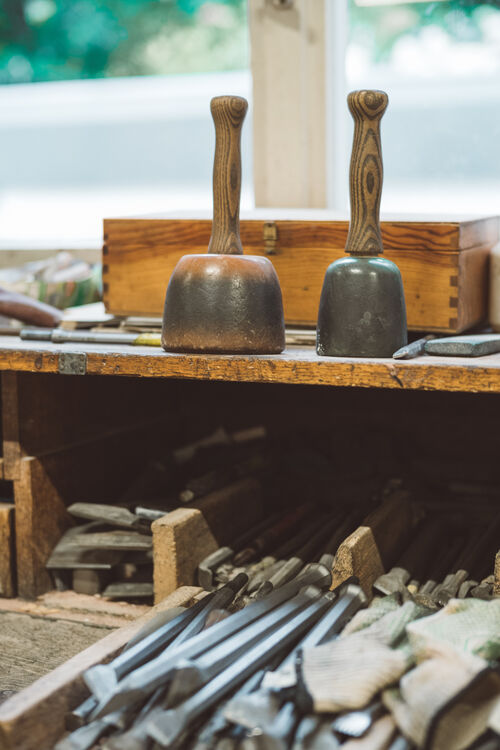
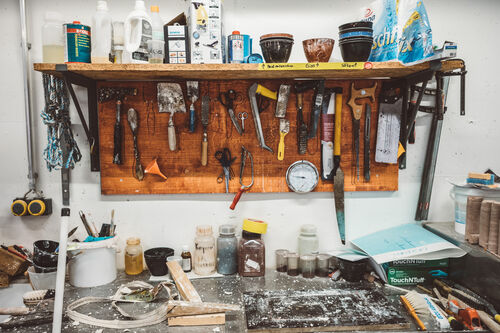
Next to its main entrance, for example, we find a long groove etched into the stone. “It’s as long as a standard ell,” she explains, pointing to the distance between her wrist and elbow to indicate the length of this ancient unit of measure. “The steeple is 210 ells high. Two plus one plus zero – that’s a hidden reference to the Holy Trinity. Numerology like this was incorporated into the entire building.” That said, religious symbols weren’t the only things hewn into the minster’s facade over the years; Freiburg’s medieval marketplace also left its marks. Right next to the ell marking, we find an engraved year and a circle. “Here, the people of Freiburg could see how big a standard bread roll was supposed to be that year,” Karin continues. The square around us has hosted the city’s open-air market for centuries, and the church once served as a type of very large bulletin board. With the price of wheat fluctuating based on each year’s harvest, the local bakers were evidently among those resorted to carving their announcements into its walls.
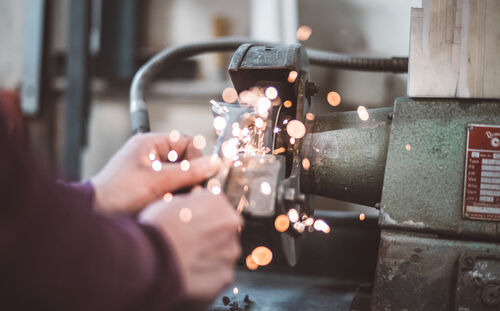
We start making our way back to the stonemasons’ workshop. At the rear of the Freiburg Minster, Karin pauses once more to draw our attention towards the heavens. “There – you see that part of the column? That’s another of mine,” she says, pointing at one of five pillars that appear above some heavy-duty construction scaffolding. The section she means is maybe a metre and a half tall and a metre wide. We can make out a few floral designs among the straight lines and slanted surfaces. Compared to the imposing aura of the rest of the minster, it seems like a small piece of a puzzle. And just like that, something clicks into place: From the arches, angles, edges, and perfectly aligned stones to the curvatures, chamfers, and pillars (and the decorative edgework on the pillars), every last detail of this gigantic structure is the result of hours of patient, arduous work someone had to do by hand. As flashes of insight go, this one is fairly pedestrian, but the reverence one then feels at the sight of the Freiburg Minster is all the more profound for it. You get an idea of its sheer dimensions as a constructed work, if only for a moment.
The Freiburg Minster actually isn’t a minster at all – it’s a cathedral. This official title has to do with Freiburg’s status as an archdiocese, but since the distinction hasn’t been of much interest to most citizens over the years, its name remains Münster Unserer Lieben Frau (“Minster of Our Lady”). The splendid sanctuary has been gracing the heart of the city for nearly 820 years. More or less, anyway: Historians estimate that it took just under 300 years to erect the minster between the years 1200 and 1530. That’s just a bit longer than it takes to build an airport in Berlin! Of course, that project hasn’t involved cutting each individual stone into the proper shape …
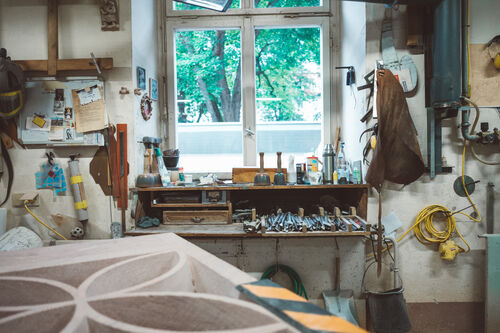
Along with physical strength, sculpture and the stonemason’s trade require one thing in particular: patience. Back in the minster’s workshop, Karin stands next to a huge block of familiar red sandstone with a series of markings on one side. She sets the point of a gleaming chisel against the stone and raises her rubber mallet. Crack! A tiny fragment falls away. Another well-placed swing of the hammer, and another bit drops to the floor. After every few blows, Karin uses a set square to check her work. She’s currently working on another column section with plenty of flat surfaces and precise edges. “Intricate gargoyles or the four heralding angels we once got to do – those are the real treats. For this work here, patience is key,” she reveals before putting mallet to chisel once more. Above Karin’s block of stone, a large black extraction tube resembling a huge vacuum cleaner hose hangs from the ceiling. “When nobody’s taking pictures, I usually prefer to wear a mask. You breathe in a lot less dust that way, and you don’t end up with all this in your hair,” she says, giving her wavy locks a shake. Countless years spent toiling with sandstone have turned the workshop’s floor red. Although each of its 10 workstations has its own extraction tube, respiratory problems are a professional hazard most stonemasons face. Cutting and sculpting stone has not only become a rare trade, but one that has branched off into different areas, as well. The work done on gravestones or in industrial settings (think interior design or building facades) no longer has much in common with what goes on at the minster’s workshop. The techniques and materials used – and in particular, the time they require – vary from sector to sector. To this day, the Münsterbauhütte fulfils its orders by hand, which is why a project can easily take nine months to a full year.
Karin Walther’s original plan was to find a job in the field of media. “After finishing school, everybody started going to university, so I thought I had to as well. Graphic design, something like that,” the 45-year-old says with a laugh as she suctions rust-coloured debris off the sandstone block. “Then I thought about putting together a portfolio for the art academy and wound up working for a wood sculptor.” Along with the notion of working with such a particular material and the tools involved, Karin found the artisanal process itself so thrilling that she soon opted for an apprenticeship in wood carving. It’s sad in a way, but the ebb in that trade is the reason why Karin now stands before us carving stone instead. “Back then, there were all of two apprentices in the entire state of Baden-Württemberg, and they were lumped in with the stonemasons at the trade school,” she explains. “The examination subjects were the same, so I ended up doing both wood and stone science and capped it all off with an exam in sculpture.” The mother of three still maintains her passion for carving wood. When she has a bit of time left over at the end of a long day, she even takes on commissioned work.
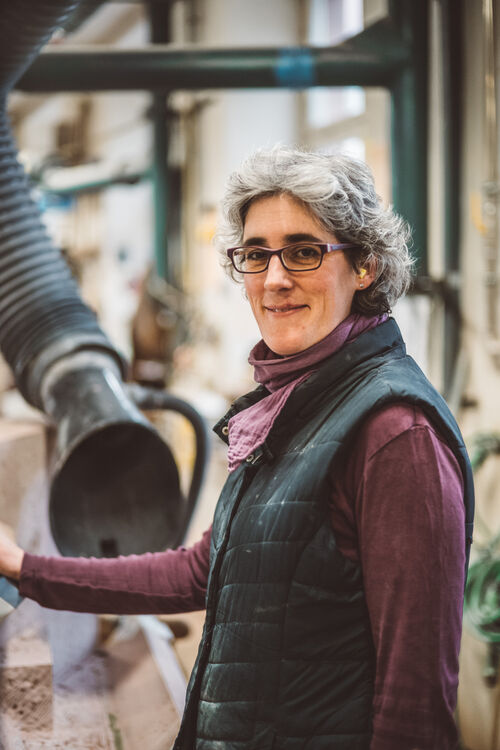
Karin has been working at the Münsterbauhütte for 23 years now. The projects undertaken here might seem monotonous at times, but it’s still an extraordinary profession, and one she loves. It’s the perfect combination of creativity, craftsmanship, and purpose. The workshop’s tasks can be divided into two areas: The first is taking inventory of the current conditions at Freiburg Minster, which involves things like producing plaster casts to round out the workshop’s archive and, of course, repairing damaged areas. The second aspect – creating new works – is more artistic, but less common.
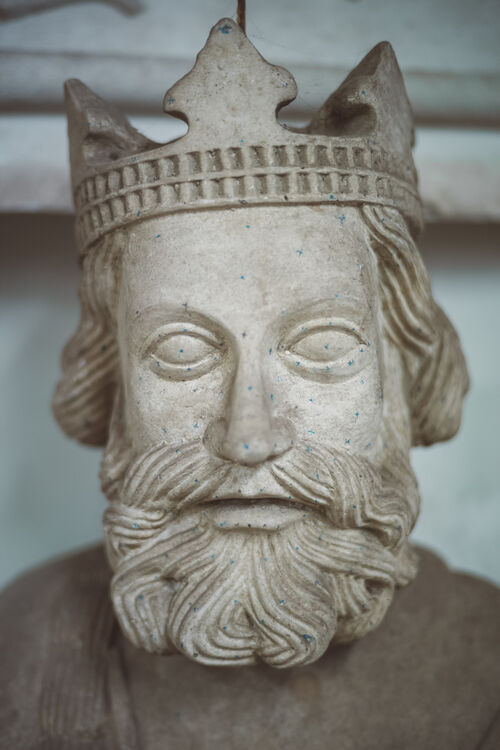
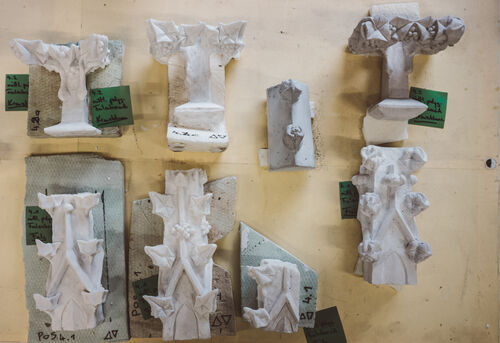
All the workshop’s efforts are developed in consultation with the local monument protection authorities. Stone experts and industrial climbers are regularly called upon to examine the minster for damage and other flaws. After that, the people in charge discuss the options available and decide on a course of action. Should the historic stone be preserved? Is it possible to fix the problems at hand, or could the process put visitors or the structural integrity of the minster itself at risk? Would it be safer and more sensible to replace the stone? If so, how? In some cases, the answers amount to little more than educated guesses. The Münsterbauhütte’s archive of photos and casts is vast, but it obviously can’t document every last stone and finial. One of its current projects has to do with the top pieces of the minster’s buttresses. These were added around the year 1750 more as a decorative flourish than for any structural reasons. Unfortunately, the sandstone used at the time has proven much too susceptible to the elements. In quite a few cases, it has sustained damage that hasn’t been documented. The workshop’s employees and the monument protection authorities have now taken up the challenge of restoring these sections to something resembling their former glory. The stonemasons and sculptors among them are hard at work creating models of plaster and plastic that will eventually be etched into stone.
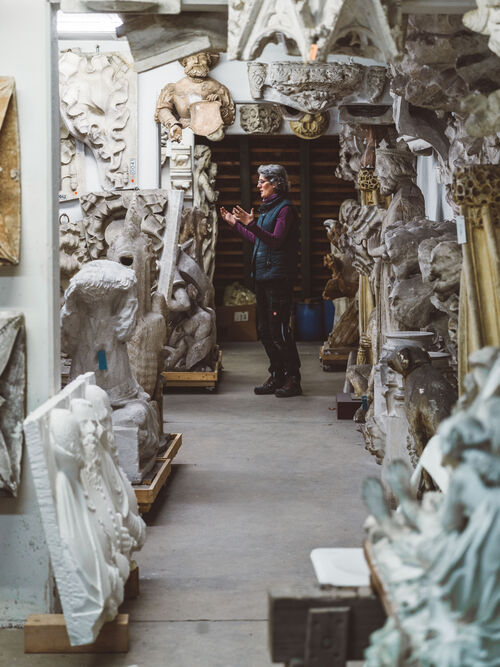
With that, Karin leads us to the lift that will take us to the collection of casts on the first floor. Even in the dark, you get a certain sense of claustrophobia. A neon light flickers on, and we find ourselves surrounded by figures as tall as we are. They stand in rows like a small army that has occupied the two separate rooms. The statues are far from uniform, however, ranging from bearded fellows bearing heavy tomes to a madonna amidst a host of children, saints with crowns and scrolls, and giant wings and vestments. Other imagery hangs from the ceiling: twisting foliage, goats and all manner of other four-legged fauna, and smaller holy icons. They all seem to be staring right at us. “What’s unique about Freiburg is that here, not even a single leaf is quite like the next. If you look closely, they all differ a bit – there are so many hidden details. Some we don’t even notice until we make a cast.” Karin stops in front of a large piece of verdant bordering. “Look here,” she says, pointing between the thick leaves. “Someone tucked away a little creature in there. You almost don’t see it with the naked eye.” And sure enough, we find something that looks like a dachshund sitting in the left corner among the flora. “Special features like these are what we want to preserve,” Karin points out. “They’re the signatures of every stonemason who’s ever worked here.” She then moves on to consider a sheep of impressive size. Countless locks of plaster wool curl their way across the animal’s entire body, which stands nearly a metre high. “I spent quite a lot of time with this beast,” she remarks, running an affectionate hand over its ridged horns. Upon noticing the tiny blue dots that cover the cast, we find out that they relate to a special stippling technique – one that enabled Karin to capture the historic sheep’s shape and dimensions down to the last detail and safeguard them for many years to come. Ultimately, this is what defines her profession and the work of the Münsterbauhütte itself: the preservation of history. It’s also the reason why the stonemasons’ workshops of minsters and cathedrals all across Europe want UNESCO to recognise their trade as intangible cultural heritage. The application for the German registry has already been approved, and the international verdict is currently pending.
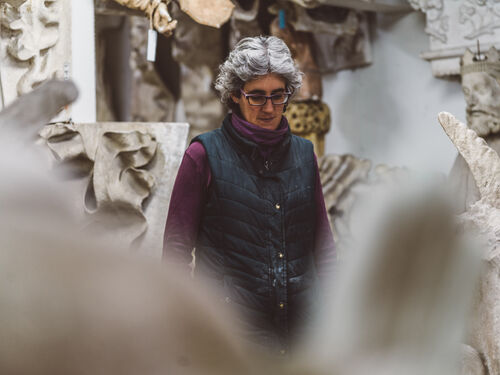
In the meantime, Karin Walther and her colleagues will continue their efforts to preserve both their craft and a truly monumental piece of Freiburg’s history.



